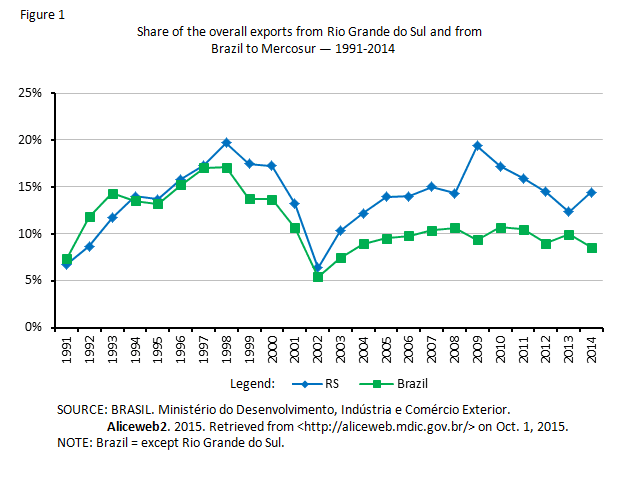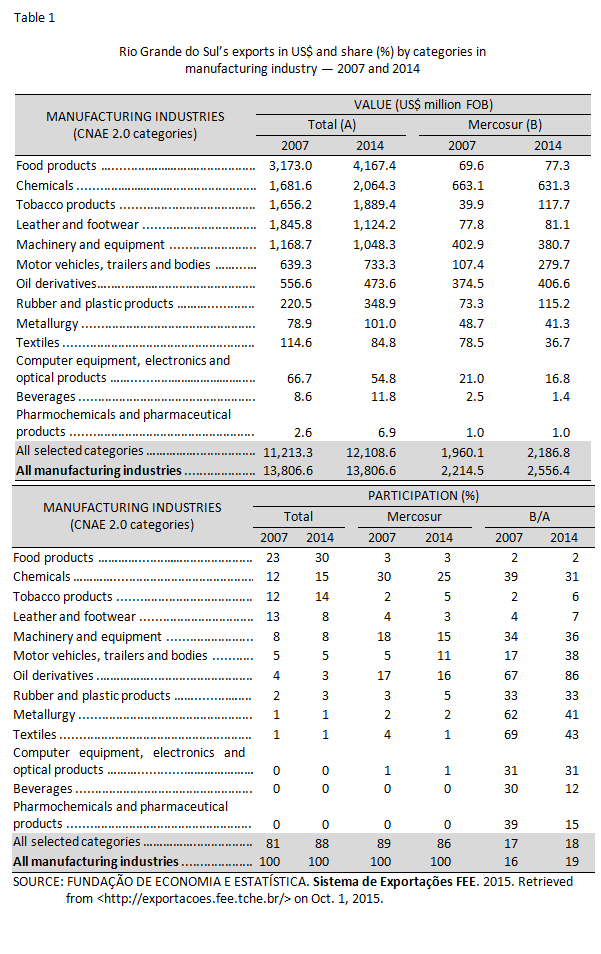The issue of immigration, for reasons that range from structural problems such as population aging and low growth to the displacement of refugees, appears in current debates very often. In Brazil and particularly in the State of Rio Grande do Sul, the matter goes from the recognition of its convenience and necessity to outright expressions of rejection and, sometimes, clear xenophobia. Aiming to avoid the immediateness of certain analyses, this article intends to set a short historical overview on the perceptions of the media of immigration in Rio Grande do Sul in three historical moments. In the first one, in the 19th century, the negative stance on German immigrants is called to focus. In the second one, in the mid-20th century, in the post-World War II period, the feeling that Brazil was losing the “competition” to attract workforce released in Europe is highlighted. Finally, nowadays, a discussion about future demographic perspectives, workforce and racial issues is noteworthy. This analysis is very useful to show that some aspects, now indisputable facts, used to raise controversy at some points, and that we should examine the question from a broader perspective.
In the then Province of Rio Grande do Sul, in 1831, the Correio da Liberdade, a newspaper of the city of Porto Alegre, called for more control by the government in the São Leopoldo Colony, which was already inhabited by numerous German immigrants, for that community was allegedly guided by people “whose languages and cultures differ much from ours and who are, in a large proportion, mercenary soldiers, well-accustomed to the immorality and plunder of the Campaigns, or even people coming from faraway countries, where clearly the most virtuous ones wouldn’t be chosen to be exported”.[1]
It seemed evident, back then, how hard it was to contain a population whose framing and assimilation was really difficult. Arriving from different nations, these culturally distinct people were, in a way, under evaluation. The possessive pronoun — language and culture that differ from ours very much — indicates a movement of belonging and, at the same time, of homogenization at an early stage in the establishment of a national identity.
The concern about the effective integration of foreigners was felt and answered by the immigrants themselves. The Colono Alemão, a paper that represented the interests of settlers, claimed that their destinies were “closely related to those of the people of Rio Grande do Sul, and even if previous governments had failed to grasp the usefulness to the Province of tightening links in this natural and healthy union, the philanthropic man and true lover of his country would not give up the idea of incorporating such industrious and peaceful people into the bosom of the big Brazilian family”.[2]
Despite the resistance, time went by, and Brazil became a large recipient of workers from other countries. In a second moment, in the mid-20th century, still during World War II, the Diário de Notícias newspaper, of Porto Alegre, published an editorial entitled Colonization and immigration, in which it showed concern over the urbanization process and the demographic voids in Brazil, which would entice the greed of imperialist nations.[3] While that article highlighted the internal aspects of migration, which was a result of the new phase of national development, another editorial of the end of the same year, Problems of immigration policy, discussed what immigration policy should be established after the war, recognizing the importance of welcoming foreign labor.[4]
When the war was over, the debate oscillated between the claim for more immigrants and the pessimism about the outcomes. In the same newspaper, an article, Displaced to Brazil, advocated the facilitation of the immigration policy concerning European war refugees, because, in their view, Brazil was wasting a unique opportunity for obtaining relatively skilled labor to countries such as Canada and the United States.[5] Soon after that, in a report called All Italian immigrants will go to Argentina, it regretted the lack of a more effective policy by Brazil’s government regarding Italian immigrants, who kept going en masse to Argentina. The consequence of this inaction would be to make Brazil “risk losing a valuable and irreplaceable contribution of blood”.[6] That was a recurrent complaint and if the country did not want to botch that opportunity, it should provide “work conditions that have compensations and guarantees capable of making them feel attached to the land”.[7]
The Correio do Povo newspaper, in its turn, expressed its perceptions in a similar way, although more frankly with respect to the racial issues. It encouraged the immigration of the Dutch, “a great racial element and a magnificent land worker” and stated, justifying itself, that this measure would not mean “to pretermit the native by choosing the foreigner. It would, instead, contribute to the improvement of the race itself and cooperate in the exploitation of the land to increase the wealth of the nation”.[8] Almost in the mid-20th century, the issue of the advancement of the race still came up, with an appeal to eugenics that would reappear soon afterwards. In a piece properly called Missed Opportunities, it deplored the fact that Brazil did not consider the “marvelous immigration possibilities that the war and the world’s maladjustments” generated, because “the import of first-class humans” would be of tremendous benefit, “due to the economical and ethnical factors it presents”.[9]
Although the ethnic aspect was indeed highlighted, the bulk of the matter still seemed to be economic, because of the chance of using well-trained labor. That happened in a piece of news that praised Argentina for its policy of welcoming immigrants. According to the author, besides farm workers, Argentina was about to receive highly-skilled people. In the end, he asks: “Meanwhile, what is being done in Brazil?”.[10]
Looking at the contemporary press, at the end of this brief review, it is symptomatic to realize how some arguments now advocated resemble those that were used in previous moments. The Brazilian edition of El País, of June 8th, 2015, for instance, featured an article whose title is unequivocal: “Late in the international context, Brazil now studies how to attract immigrants” [11]. In the same way, but adding the consequences of the crisis, an article in the BBC Brasil, of December 1st, 2015, points to the falling number of immigrants coming to the country, asserting that the data available were part of a “broader research especially demanded by the Ministry of Labor to develop policies more suitable to attract immigrants to Brazil — with an eye on the arrival of skilled labor to boost the economy” [12].
That view about immigration in Brazil, which seems to repeat itself throughout history, is not any different, generally speaking, from the ones in Rio Grande do Sul. The importance of welcoming foreign labor was featured in the issue of June 22nd, 2015 of Sul21, in which the immigrants’ work capacity, discipline and employability are praised. The business community would be open to hire these immigrants, even though prejudice concerning the different cultures and religions of some groups still persisted.[13] In fact, some cases of xenophobia, mainly against black immigrants, were reported by the state’s press in 2015. Moreover, a vague notion that foreigners come to get the jobs that could be taken by local workers was also present in that discussion.
This quick overview intends to show the historicity of the views on the phenomenon, since aspects related to the openness of the general public to immigration depend on particular conjunctures. Immigration, recognized a posteriori as a driving force behind development, went through a hard time to be effectuated. The “selection” justified by the argument of the improvement of the race echoes even today in some hostile manifestations, especially against black immigrants. Nevertheless, governments must deal with this subject in a more rational way, because, in a more realistic perception, the repeated argument of the necessity of making it easier for immigrants to come, stay and adapt to Brazil and Rio Grande do Sul, following the example of other nations, is still noticeable.
It is possible that now, when the population aging process (particularly in Rio Grande do Sul) and the lack of professionals in many areas (especially in some regions) are making matters worse, the debate about immigration might be made on different grounds. For that to happen, it is paramount to recognize the historical contribution of immigration to the foundation of both the Brazilian society and that of Rio Grande do Sul and to change our attitude in order to make sure that immigrants are welcomed in the present and in the future.
[1] CORREIO DA LIBERDADE. Porto Alegre: [S.n.], n. 23, 2 jun. 1831. Translation mine.
[2] O COLONO ALEMÃO. Porto Alegre: [S.n.], n. 1, 3 fev. 1836 Traslation mine.
[3] COLONIZAÇÃO e imigração. Diário de Notícias, Porto Alegre, p. 4, 27 fev. 1943.
[4] PROBLEMAS de política imigratória. Diário de Notícias, Porto Alegre, p. 4, 5 dez. 1943.
[5] DESLOCADOS para o Brasil. Diário de Notícias, Porto Alegre, p. 4, 8 jan. 1948.
[6] CONVERGIRÁ para a Argentina toda a imigração italiana. Diário de Notícias, Porto Alegre, p. 1, 5 fev. 1948. Translation mine.
[7] DIÁRIO DE NOTÍCIAS. Porto Alegre: [S.n.], 19 maio 1948. Translation mine.
[8] CORREIO DO POVO. Porto Alegre: [S.n.], 5 maio 1948. Translation mine.
[9] OPORTUNIDADES que se perdem. Correio do Povo, Porto Alegre, p. 4, 11 ago. 1948. Translation mine.
[10] CORREIO DO POVO. Porto Alegre: [S.n.], 9 jul. 1948. Translation mine.
[11] MARTIN, M. Atrasado no contexto mundial, Brasil estuda agora como atrair imigrantes. El País, Madrid, 7 jun. 2015. Retrieved from <http://brasil.elpais.com/brasil/2015/05/29/politica/1432914508_370989.html> on 14 Aug. 2015. Translation mine.
[12] CARNEIRO, J. D. Cai entrada de imigrantes no Brasil, aponta pesquisa. BBC Brasil, [Rio de Janeiro], 1 dez. 2015. Retrieved from <http://www.bbc.com/portuguese/noticias/2015/12/151201_imigracao_brasil_jc> on 7 Dez. 2015. Translation mine.





